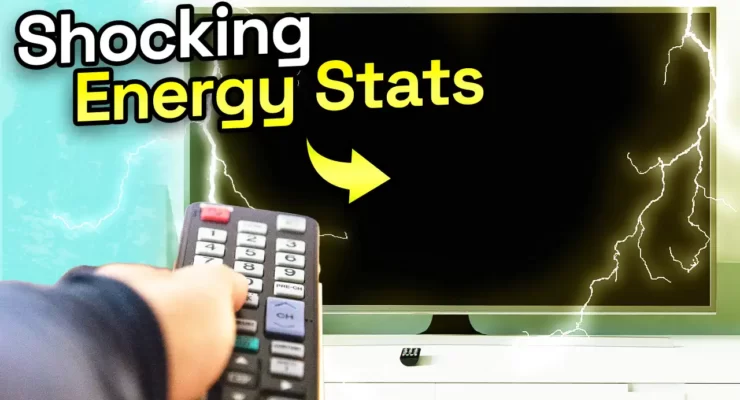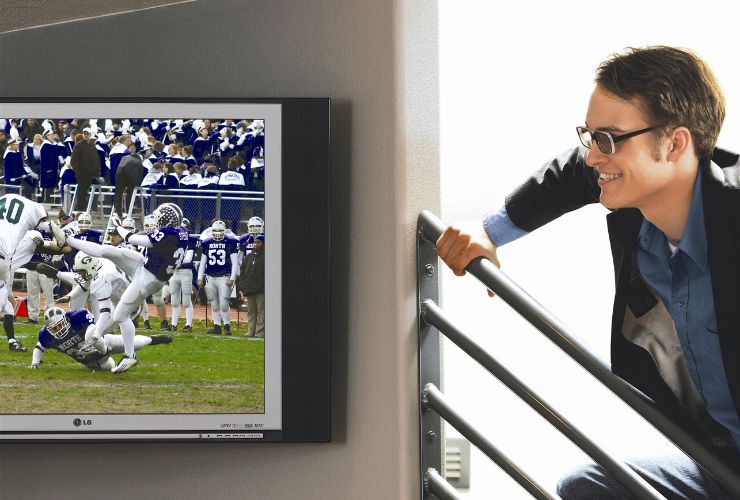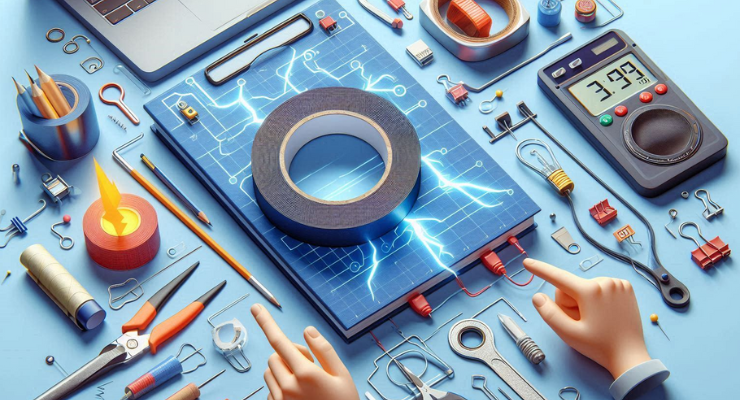
Fast read
TV technology significantly impacts energy efficiency. For example, LED TVs use between 90 and 420 watts when turned on, while plasma TVs consume substantially more power. The size, age, and whether or not a TV is left on standby can also affect how much energy it uses.
To save energy, unplug your TV when not in use. Use the energy-saving mode and set a timer to turn it off automatically. Additionally, consider choosing LED or OLED TVs instead of plasma TVs. You can also compare the efficiency of various models by using the Energy Rating label on TVs.
Are different TVs more energy efficient than others?
One in five Australians buys a new television yearly, meaning we purchase nearly 5 million TV sets annually. Every television sold within Australia and New Zealand must meet a minimum level of energy efficiency. Each television shown in a shop must also display the Energy Rating label. The Energy Rating Label shows the TV energy consumption in a year with average viewing time.
The label shows an Energy Star rating to compare how efficient TVs of the same size are.
When buying a TV, people often focus on its appearance, size, and technology. However, it’s important to also consider the energy rating before making a decision.
Different TVs use different amounts of energy
A TV uses less energy than other devices like water heaters and air conditioners. TV generally consumes around 4 to 5 % of your household’s electricity annually.
The average modern LED TV energy consumption is between 90 and 420 watts when turned on. Four hundred twenty watts is approximately the electricity consumption of a washing machine. However, this depends on the physical dimensions and features of the TV. size of the TV and the detailed brand and technology used.
If we use a sample electricity cost of 30 cents per kilowatt hour, a 250-watt-per-hour consumption TV, and a viewing time of 4 hours per day, we get a 1 kiloWatt/hour(kW/h) total energy consumption per day. Watching the same amount of TV every day costs about $9 to $10 per month for electricity.
What factors influence your television electricity consumption data
Users who use their TVs for longer hours naturally pay higher energy bills. They also leave it on when they use it to keep the baby or pets occupied. This can get expensive after a while.

Other aspects:
The screen type: It is important to remember that LCD screens consume almost the same amount of power as LEDs. Please note that older technology Plasma TVs usually consume three times more energy than LED.
The age of the TV: Older models can consume up to 4- 500 Watt per hour, twice the power of a late model TV
Television size: TV power consumption is determined by the size. The larger the TV, the more electricity it will consume. Therefore the trend to larger and larger televisions over the past years has seen electricity consumption increase steadily.
How to monitor your TV’s consumption
To determine how much power your TV consumes, you can refer to its technical data sheet. This information is typically available online, either on the product’s website or other reliable sources. These sheets provide detailed information on how much electricity specific TV models use when running at full capacity.
While most modern TVs provide this information readily, older models might not have easily accessible technical data. If you don’t know how much power your TV uses, a wattmeter can provide the electricity information you need.
A wattmeter, when connected to the TV’s PowerPoint, measures the actual power drawn by the television. This method provides real-time information about how much electricity your TV consumes during operation. I recommend a practical approach, especially for older TVs that lack specific technical documentation about their power usage.
Understanding the power consumption of your TV allows you to make informed decisions regarding energy usage. This can lead to cost savings and contribute to environmental preservation.
Knowing how much power your TV uses can help you save energy at home. You can find this information in technical data sheets or by using a wattmeter.
Final TV energy savings tips:
- Enable the energy-saving mode on the TV. Most modern TVs have this feature, and you will hardly notice any difference in viewing enjoyment.
- Using a timer for your TV can help save electricity, especially if you tend to doze off while watching. It turns off the TV when not in use to save energy and prevent wasting power.
- Avoid Plasma TVs. Plasma TVs use much more energy than other flat-screen models. OLEDs are excellent because they are more efficient than conventional LEDs.
- Many modern TVs have a built-in presence sensor. This is also useful for people who forget to turn the equipment off before work.
Follow these tips and see your electric bill.


